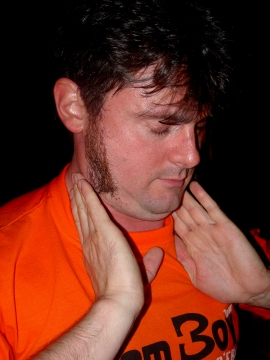
Experts have known since 500 BCE that mindfulness practice can lead to greater feelings of equanimity and contentment. Mindfulness- based therapies have been part of western psychology at least since 1979, when Jon Kabat-Zinn opened the Center for Mindfulness in Medicine, Health Care, and Society at the University of Massachusetts Medical School. Unlike many other “eastern” treatments, empirical studies have accumulated to support claims of effectiveness against depression[i] and anxiety disorders such as generalized anxiety disorder[ii], obsessive-compulsive disorder[iii], and even irritable bowel syndrome[iv].
What has been less well understood is how it works. Michael Treanor, of the University of Massachusetts published a meta-analysis[v] this February that suggests exposure is key. Since Joseph Wolpe’s time (and before), we’ve known if you expose yourself long enough to something that causes anxiety, your amygdala and sympathetic nervous system will (eventually) realize it’s not so dangerous. The difficulty has always been how to stay with the phobic object when every part of you wants to run. Treanor’s meta-analysis finds empirical support for the idea that mindfulness works as a conditioned inhibitor – meaning, in this case, it eases the urge to flee.
Treanor’s findings were anticipated in a 2005 article[vi] by Shapiro, Carlson et al. They defined mindfulness as choosing to focus one’s attention on the present moment, with an open, accepting attitude, and the intention of calming, exploring, or regulating oneself. Marsha Linehan made it part of Dialectical Behavioral Therapy because it helped her chronically suicidal clients stay present with their emotions long enough to recognize and tolerate them. For those overwhelmed by dysphoria, mindfulness can be like the difference between watching a football game from the 50-yard line, and being tackled and trampled by players on the field.
Exposure, naturally, is the key intervention in Edna Foa’s prolonged exposure therapy, which is the U.S. military’s treatment of choice for Post-Traumatic Stress Disorder. This article tells how Sgt. Richard Low, a veteran of 280 combat missions in Iraq, recovered from PTSD symptoms with help from Sudarshan Kriya yoga:
When he came back from the service, he didn’t think his experience affected him in any major way. He had nightmares, and he startled easily, but he chalked that up to just something veterans live with.
Then he enrolled in a study he initially wrote off as “just some hippie thing,” where he learned about yoga breathing and meditation. A year later, Low, 30, sums up his experience with two words: “It works.”
Heads-up to tough guys of the world: Mindfulness is not just a hippie thing. It’s also a Shaolin Monk thing.
@ 2011 Jonathan Miller All Rights Reserved
[i] Hofmann SG, Sawyer AT, Witt AA, Oh D. The effect of mindfulness-based therapy on anxiety and depression: A meta-analytic review. J Consult Clin Psychol. 2010 Apr;78(2):169-83.
[ii] Evans S, Ferrandoa S, Findlera M, Stowella C, Smart C, Haglina D. Mindfulness-based cognitive therapy for generalized anxiety disorder. Journal of Anxiety Disorders, Volume 22, Issue 4, May 2008, Pages 716-721. (doi:10.1016/j.janxdis.2007.07.005)
[iii] Hanstede M, Gidron Y, Nyklíček, I. The Effects of a Mindfulness Intervention on Obsessive-Compulsive Symptoms in a Non-Clinical Student Population. Journal of Nervous & Mental Disease: October 2008 – Volume 196 – Issue 10 – pp 776-779 (doi: 10.1097/NMD.0b013e31818786b8)
[iv] Ljótsson B, Andréewitch S, Hedman E, Rück C, Andersson G, Lindefors N. Exposure and mindfulness based therapy for irritable bowel syndrome–an open pilot study. Journal of Behavior Therapy and Experimental Psychiatry. 2010 Sep;41 (3):185-90. Epub 2010 Jan 7.
[v] Treanor, M. The potential impact of mindfulness on exposure and extinction learning in anxiety disorders. Clinical Psychology Review, Volume 31, Issue 4, June 2011, Pages 617-625
